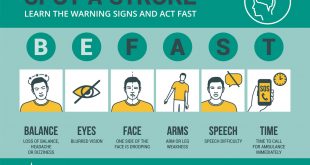By Dr. Drew Hall


Understanding Temporomandibular Disorder (TMD)
Temporomandibular Disorder, commonly known as TMD, is a condition affecting the temporomandibular joint, which connects the jaw to the skull. It often presents with symptoms like jaw pain, clicking or popping sounds when opening or closing the mouth, headaches, and difficulty in chewing. While these symptoms are localized around the jaw, they can have far-reaching effects on other parts of the body, including the neck.
The TMD-Neck Pain Connection
1. Muscle Tension: One of the primary reasons for the connection between TMD and neck pain is muscle tension. When the jaw is misaligned or experiences stress, it can trigger muscle tension not only in the jaw area but also in the neck and shoulders. This tension can lead to chronic neck pain and discomfort.
2. Postural Changes: TMD can also influence a person’s posture. In an attempt to alleviate jaw pain, individuals may unknowingly alter their posture by tilting their head or hunching their shoulders. Over time, this can lead to neck strain and pain.
3. Nervous System Interaction: The temporomandibular joint is closely connected to the upper cervical spine and the nervous system. Dysfunction in the jaw can disrupt the delicate balance of the upper cervical region, potentially leading to neck pain and related issues.
The Role of Upper Cervical Chiropractic Care
Upper Cervical Chiropractic care focuses on the relationship between the uppermost vertebrae of the spine (the atlas and axis) and the overall function of the nervous system. In the context of TMD and neck pain, this specialized form of chiropractic care can offer several benefits:
1. Precise Adjustments: Upper Cervical Chiropractors use gentle, precise adjustments to correct misalignments in the upper cervical spine. By addressing any misalignment in this region, they aim to alleviate not only TMD symptoms but also associated neck pain.
2. Improved Nervous System Function: Upper cervical adjustments can positively impact the nervous system, promoting overall wellness and reducing the likelihood of chronic neck pain.
3. Postural Restoration: Chiropractors specializing in upper cervical care can help patients regain proper posture, reducing the strain on the neck caused by compensatory movements related to TMD.
The relationship between TMD and neck pain is undeniable, with muscle tension, postural changes, and nervous system interactions playing crucial roles in this connection. For those seeking a holistic approach to managing these issues, Upper Cervical Chiropractic care offers promising solutions. By addressing the root cause of TMD and its impact on the upper cervical spine, individuals can experience relief from both jaw discomfort and neck pain, ultimately enhancing their overall well-being. If you’re experiencing the challenges of TMD and neck pain, consider consulting with an Upper Cervical Chiropractor to explore personalized treatment options tailored to your needs.
Dr Drew Hall
Dr. Drew Hall brings 20 years of practice experience and taking care of 10000 patients from Los Angeles to Sarasota Florida. Dr. Hall recovered from severe chronic health problems 30 years ago after being introduced to blair upper cervical technique. It’s his lasting purpose to help as many people as possible live a life of health and happiness.
Sarasota Upper Cervical Chiropractic
941.259.1891
sarasotauppercervical.com
 Southwest Florida's Health and Wellness Magazine Health and Wellness Articles
Southwest Florida's Health and Wellness Magazine Health and Wellness Articles

